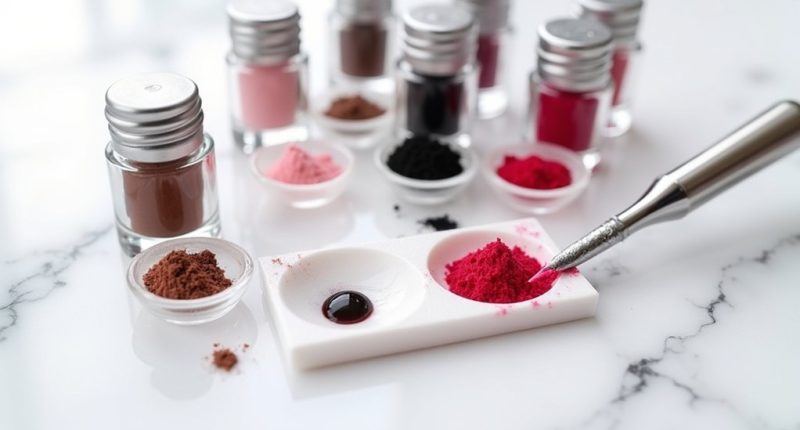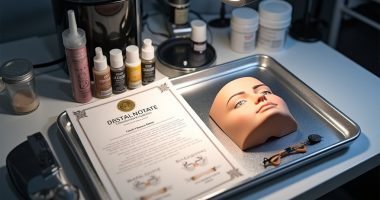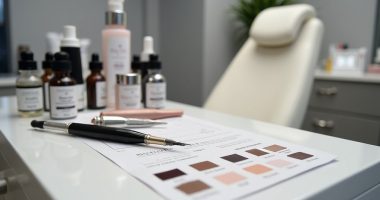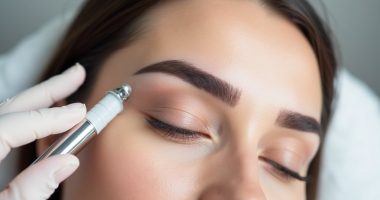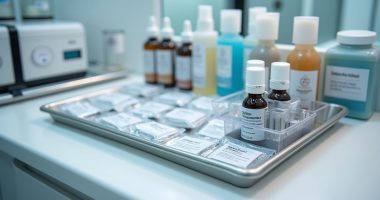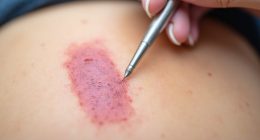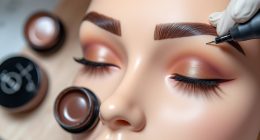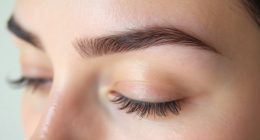Quality pigments are the backbone of successful permanent makeup. They determine color retention, safety, and overall results. Top brands like Li Pigments and Perma Blend offer fade-resistant formulations that work differently on various skin types. Smart clients check ingredients—because nobody wants heavy metals hanging out in their eyebrows. Understanding color theory separates the pros from amateurs. Your face deserves more than bargain-bin ink, and your PMU artist's pigment choice makes all the difference.
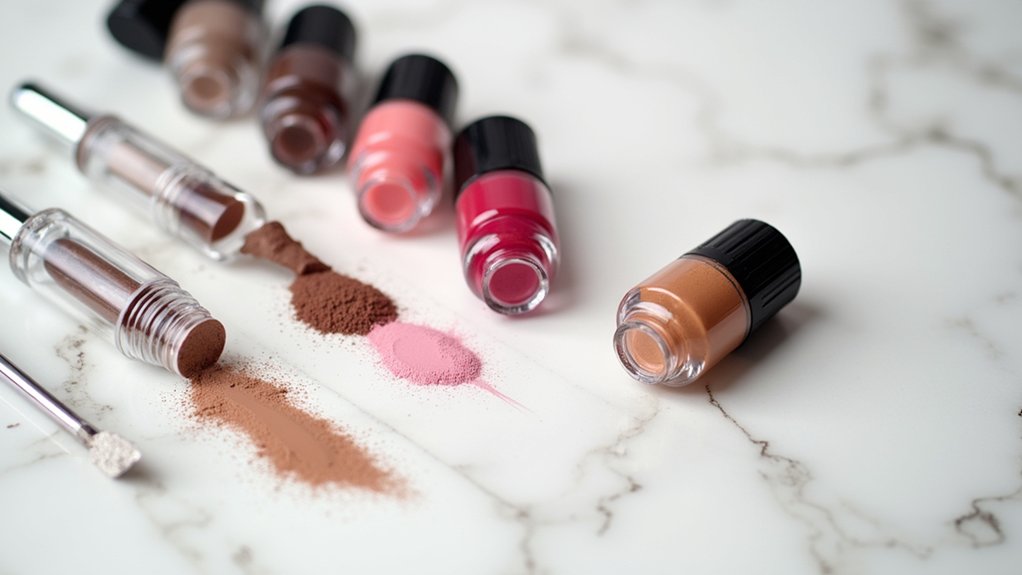
While many clients focus solely on their artist's technique, the quality and composition of PMU pigments actually determine the success of any permanent makeup procedure. These specialized formulations contain organic and inorganic colorants, carrier fluids, binders, preservatives, and stabilizers—each playing a critical role in how the pigment interacts with skin.
Without proper composition, even the steadiest hand can't deliver lasting results. Period.
Color retention depends heavily on pigment quality. Not all pigments are created equal. Some fade into weird orange or blue tones after a few months—definitely not the look anyone's paying for.
Invest in quality pigments or watch your investment turn into a Halloween mask by summer.
Pigment safety is another non-negotiable factor. The industry faces varying regulations worldwide, with EU guidelines being stricter than FDA oversight, which mostly kicks in after problems occur. Smart clients ask about pigment ingredients before letting anyone near their face with a needle. Some pigments contain heavy metals and potential allergens. Not exactly comforting.
The market features numerous brands catering to PMU professionals. Li Pigments boasts over 200 shades, while Perma Blend is celebrated for fade-resistant formulas. Tina Davies, PhiBrows, and Biotek round out the top contenders. Dynamic Color offers consistent quality with their Dynamic PMU pigments available in various shades for different skin tones and applications.
Artists typically develop loyalty to specific brands through trial and error—sometimes at clients' expense. Experienced artists carefully select pigments with high-quality ingredients to minimize allergic reactions and improve overall color retention in the skin.
Skin type dramatically influences pigment performance. Oily skin tends to reject pigment faster, while mature skin might need different application techniques. Body chemistry affects how pigments break down over time. Some people metabolize certain pigments more quickly than others. It's just biology.
Color theory knowledge separates amateurs from professionals. Understanding warm versus cool undertones prevents disastrous results. The Fitzpatrick scale helps match pigments to skin types.
A good artist considers not just how a pigment looks immediately but how it will appear months later after healing and exposure to sunlight. Permanent makeup offers a time-saving solution for those with busy lifestyles who want to look their best without daily makeup application.
Technological advancements continue to improve PMU pigments. Vegan and cruelty-free options have entered the market. Nano-pigment technology allows for more precise, finer lines. Specialized formulations for specific treatments like areola reconstruction offer more natural-looking results.
Bottom line? The pigment matters as much as the person holding the tool. Artists who invest in premium products and understand color science deliver superior results. That perfect brow? It's chemistry, not just artistry.
Frequently Asked Questions
How Long Does PMU Pigment Typically Last Before Fading?
PMU pigment longevity varies widely—typically 1-5 years before significant fading occurs.
Eyebrows last 1-3 years, eyeliner 2-4, and lip blush can stick around for 2-5 years.
Freckles? Gone fastest at 1-2 years.
Numerous fading factors come into play: oily skin speeds up the process, sunshine is pigment's enemy, and skincare products can wash away results.
Age matters too.
Quality pigments and proper technique? They make all the difference.
Touch-ups are inevitable, folks.
Are PMU Pigments Safe for People With Sensitive Skin?
PMU pigments can be risky for sensitive skin. Allergic reactions happen—not common, but they happen.
Iron oxide pigments? Usually fine. Vegetable-based ones? Not so much.
Some people's faces turn into a swollen, red mess. Others? Nothing. Patch testing is essential, folks.
Heavy metals and preservatives in pigments can irritate delicate skin types. Hypoallergenic options exist, thank goodness.
Bottom line: sensitive-skinned people should proceed with caution. No one wants their eyebrows to become their newest skin problem.
Can PMU Pigments Be Removed if I Change My Mind?
Yes, PMU pigments can be removed.
Two main removal techniques exist: saline and laser. Saline uses salt solutions to draw out pigment—works well on most colors. Laser breaks down particles with light energy—effective but riskier near eyes.
Neither is perfect. Both require multiple sessions, significant time (6-12 months), and cash ($200-500 per session).
Some pigment alternatives might be worth considering for those commitment-phobes out there. Nothing's truly permanent these days. Even "permanent" makeup.
Do PMU Pigments Change Color Over Time?
Yes, PMU pigments absolutely change color over time. No getting around it.
Color stability depends heavily on pigment formulation—organic ones break down faster, showing those hidden undertones nobody warned you about. Blues and greens? They love making surprise appearances.
Factors like oily skin, sun exposure, and even your fancy face creams accelerate these shifts. Quality matters. Cheap pigments? Bigger color changes.
It's chemistry and biology doing their thing, whether you like it or not.
What's the Difference Between Tattoo Ink and PMU Pigments?
Tattoo ink composition and PMU pigment formulation differ dramatically.
Simply put, PMU pigments contain smaller particles in diluter for a natural appearance, while tattoo inks are more concentrated with vibrant synthetic pigments.
Placement matters too. PMU sits shallower, between epidermis and dermis, while tattoos go deeper.
The results? PMU fades in 1-3 years, requiring touch-ups. Tattoos? They're basically forever.
Oh, and PMU follows stricter cosmetic regulations. Safety first, right?
